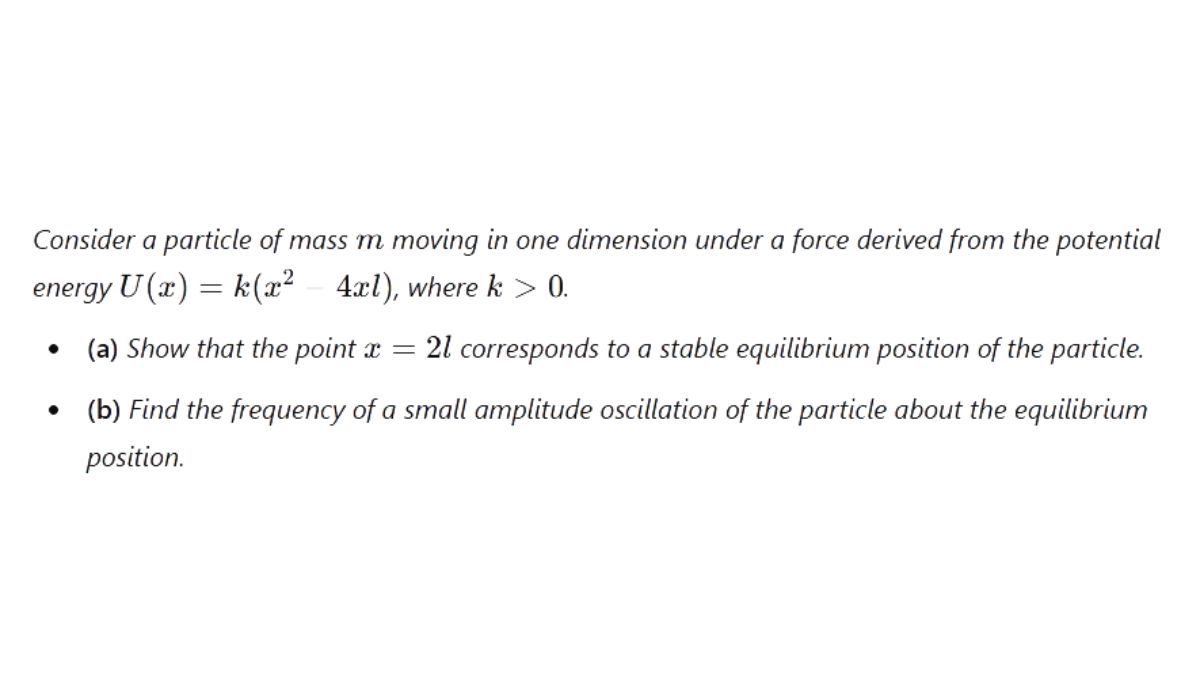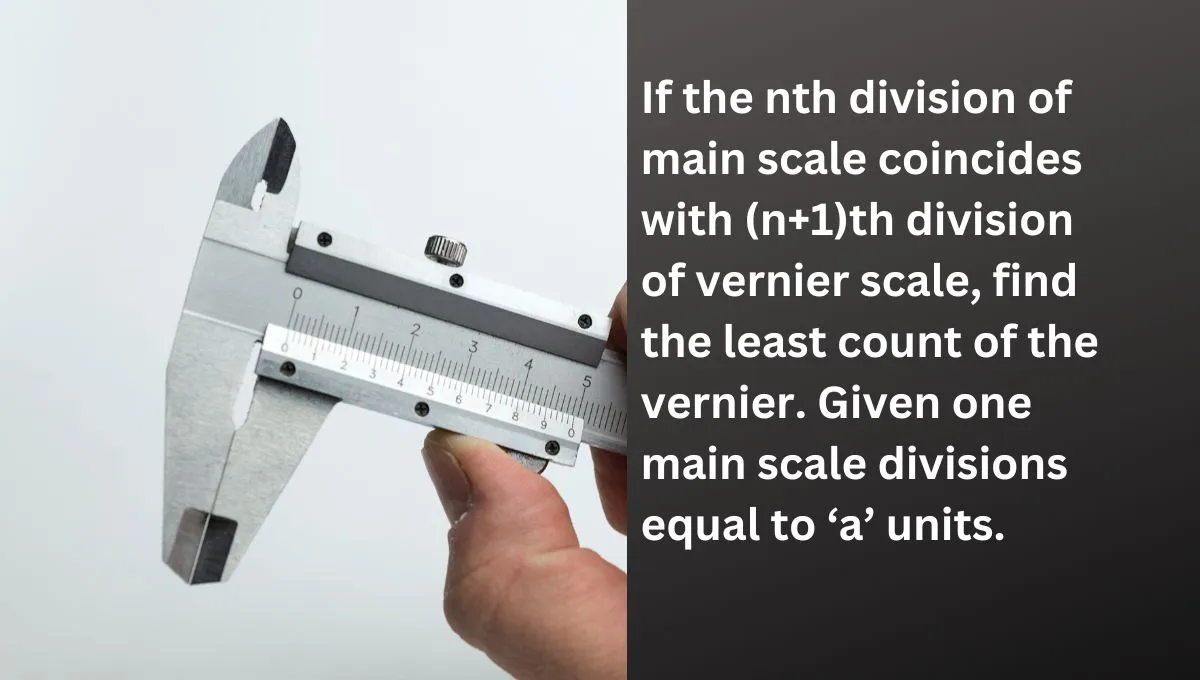Understanding how particles behave under different potential energies is key in classical mechanics. We explore a one-dimensional system where a particle of mass ![]() moves under a specific potential energy:
moves under a specific potential energy:
![]()
Here, ![]() is a positive constant,
is a positive constant, ![]() is the position, and
is the position, and ![]() is a constant length. Our goals are to:
is a constant length. Our goals are to:
- Show that
 is a stable equilibrium position for the particle.
is a stable equilibrium position for the particle. - Determine the frequency of small amplitude oscillations around this equilibrium point.
Problem Statement
Consider a particle of mass ![]() moving in one dimension under a force derived from the potential energy
moving in one dimension under a force derived from the potential energy ![]() , where
, where ![]() .
.
(a)Show that the point ![]() corresponds to a stable equilibrium position of the particle.
corresponds to a stable equilibrium position of the particle.
(b)Find the frequency of a small amplitude oscillation of the particle about the equilibrium position.
Solution
Part (a): Demonstrating Stable Equilibrium at 
Step 1: Find the Equilibrium Position
An equilibrium position occurs where the net force acting on the particle is zero. The force ![]() is related to the potential energy
is related to the potential energy ![]() by:
by:
![]()
Let’s compute ![]() :
:
- Expand
 :
:
![]()
- Differentiate
 with respect to
with respect to  :
:
![]()
- Determine
 :
:
![]()
Set ![]() to find the equilibrium position:
to find the equilibrium position:
![]()
Step 2: Analyze Stability
A point of equilibrium is stable if a small displacement results in a restoring force that pushes the particle back toward equilibrium. Mathematically, this requires the second derivative of the potential energy at that point to be positive:
![]()
Compute the second derivative:
- Differentiate
 :
:
![]()
- Evaluate at
 :
:
![]()
Since ![]() , the second derivative is positive. This confirms that
, the second derivative is positive. This confirms that ![]() is a stable equilibrium position.
is a stable equilibrium position.
Part (b): Calculating the Oscillation Frequency Around 
When the particle moves small distances around the stable point, it acts like a simple harmonic oscillator (SHO). The angular frequency ![]() of these movements is given by:
of these movements is given by:
![]()
The effective spring constant ![]() is defined as:
is defined as:
![]()
Compute ![]() :
:
We already found in Part (a) that:
![]()
So, ![]() .
.
Calculate the Angular Frequency ![]() :
:
![]()
Determine the Oscillation Frequency ![]() :
:
The frequency ![]() is related to the angular frequency
is related to the angular frequency ![]() by:
by:
![]()
Substitute ![]() :
:
![]()
Final Answer:
![]()
Conclusion
We have successfully:
Proved that ![]() is a stable equilibrium position by showing that the net force is zero and the second derivative of the potential energy at that point is positive.
is a stable equilibrium position by showing that the net force is zero and the second derivative of the potential energy at that point is positive.
Calculated the frequency of small amplitude oscillations around this equilibrium position, finding it to be ![]() .
.
Implications
This analysis shows that near the stable equilibrium point, the particle exhibits simple harmonic motion. The frequency depends on the constants ![]() and
and ![]() :
:
- A larger
 (steeper potential) results in a higher frequency.
(steeper potential) results in a higher frequency. - A larger mass
 results in a lower frequency.
results in a lower frequency.
Further Reading
- Classical Mechanics by Herbert Goldstein
- Introduction to Mechanics by Daniel Kleppner and Robert Kolenkow
- Articles on harmonic oscillators and stability analysis in physics journals
About the Author
As a physics enthusiast with a focus on classical mechanics, I enjoy exploring the intricacies of particle dynamics and potential energies. My goal is to make complex concepts accessible and engaging for students and enthusiasts alike.




